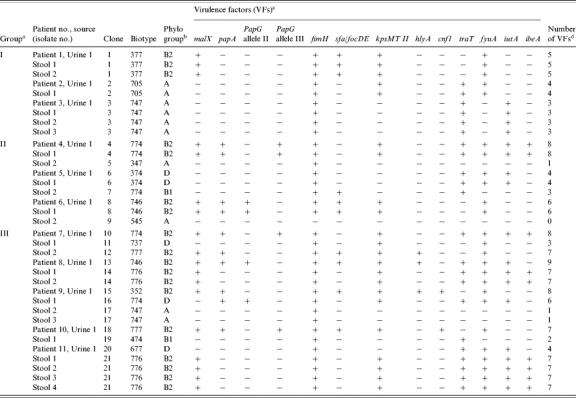Table 2.
Clonal identity, biotype, phylogenetic group, and virulence profile of Escherichia coli isolates from urine and stool from 11 women with symptomatic urinary tract infection

Colonization group (I, II, or III) was defined based on the correspondence of urine and faecal clones in individual subjects. In group I, a single faecal clone was detected, corresponding with the urine clone (U=F). In group II, multiple faecal clones were detected, including the subject's urine clone plus ⩾1 distinct ‘faecal only’ clone(s). In group III, the clones detected in faeces were all ‘faecal only’, i.e. did not include the urine clone. malX, marker for pathogenicity-associated island from strain CFT073; papA, P fimbriae structural subunit; papG, P fimbrial adhesin molecule; fimH, type-1 fimbriae; sfa/focDE, S and F1C fimbriae; kpsMII, group II capsule synthesis; hlyA, haemolysin; cnf1, cytotoxic necrotizing factor 1; traT, serum-resistance associated outer membrane protein; iutA, aerobactin; fyuA, yersiniabactin receptor; ibeA, invasion of brain endothelium. None of the strains showed papG allele I or afa/draBC (Dr-binding adhesins).
The number of virulence factors (VFs) was calculated for each isolate as the sum of pap (with the presence of papA and/or papG allele II or allele III counting as one unit) plus all others VFs detected.
